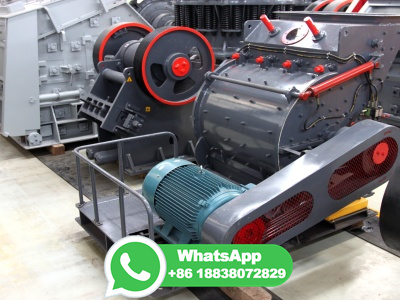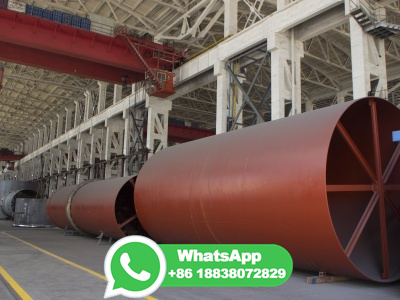
WEBInstead of heating and smelting the iron ore, Electra's process dissolves the ore in a waterbased acid solution. Next, electricity is used to electroplate iron with >% purity from the solution while regenerating all chemicals and water used in the process. Unlike incumbent processes that emit CO 2, Electra's process releases only pure ...
WhatsApp: +86 18203695377
WEBPrimary world nickel production in 2020 was kt Ni; 69% ( kt) of them came from oxidized nickel ores (laterites) and 31% from sulfides. Productionwise, % of the kt came from pyrometallurgical and % from hydrometallurgical processes. For a long time, FeNi had a 20–40% Ni analysis, but in 2006 a new FeNi quality came into .
WhatsApp: +86 18203695377
WEBSep 24, 2022 · The raw materials like iron ore, coal contains small amount of mercury, which released during steel production. In this study, field studies have been conducted for estimation of mercury input and release from an integrated steel plant in India. ... Wang FY, Wang S, Zhang L, Yang H, Gao W, Wu Q, Hao J (2016) Mercury mass flow in iron and .
WhatsApp: +86 18203695377
WEBFeb 3, 2022 · Iron ore is a rock from which the metal iron is extracted. About 98% of the world's iron is used to produce steel. Pure iron is an element and a soft grayishwhite metal. Other than meteorites that fall from the sky, iron is never found by itself in nature. Most iron is part of minerals that contain other elements.
WhatsApp: +86 18203695377
WEBMay 13, 2024 · The Steel Manufacturing Process. The steel production process is a multifaceted journey that begins with extracting and processing iron ore, a primary raw material essential to steel making. Iron ore undergoes a series of refining steps to extract the iron content, culminating in the creation of molten iron. This molten iron is then .
WhatsApp: +86 18203695377
WEBThe Bessemer Process for Steel production and; The Open Hearth Process of Steelmaking; Steel manufacturing Principle of the Bessemer Process. The main raw materials for Steel production in a blast furnace are Iron ore, limestone, coke, and some scrap steel. These materials are charged into the blast furnace from the top and .
WhatsApp: +86 18203695377
WEBDirect reduced iron is iron ore in the form of lumps, fines or pellets that have had the oxygen removed by using hydrogen and carbon monoxide. Typical sources of carbon monoxide are natural gas, coal gas, and coal. Other energy inputs into the production process often include oil and electricity. Since much of the energy used is in the form of ...
WhatsApp: +86 18203695377
WEBReduced iron derives its name from these processes, one example being heating iron ore in a furnace at a high temperature of 800 to 1,200 °C (1,470 to 2,190 °F) in the presence of the reducing gas syngas, a mixture of hydrogen and carbon monoxide, or pure hydrogen. Production of directreduced iron and breakdown by process
WhatsApp: +86 18203695377
WEBIron ore reduction is an important process in the iron/steelmaking industry, where iron ore is reduced to metallic iron, usually with coal, coke, natural gas, CO, or hydrogen as the reducing agents. ... Iron production and Steelmaking are very energyintensive processes with an estimated global energy intensity of GJ/ton [1]. The whole ...
WhatsApp: +86 18203695377
WEBMay 14, 2020 · The binder is an important additive widely applied in pelletizing iron ore concentrates, making iron ore pellets available as feedstocks for blast furnace ironmaking or direct reduction processes ...
WhatsApp: +86 18203695377
WEBJan 13, 2023 · The production of iron from its ore involves a redox reaction carried out in a blast furnace. The furnace is filled at the top with the iron ore oxide most commonly hematite ((Fe_2O_3)) but can also magnetite ((Fe_3O_4)), carbon called coke and limestone ((CaCO_3)). ... As the process continue the molten iron flow down through .
WhatsApp: +86 18203695377
WEBIron ore Hematiterich iron ore. Iron ore is a mixture of rocks and minerals containing enough iron content and sufficient volume and accessibility for mining and transportation to be economically mined. Around five percent of the Earth's crust is composed of iron making it the fourth most abundant element. Globally, iron ore is most commonly found in .
WhatsApp: +86 18203695377
WEBSponge iron production process discussed herein are selected from known methods of which the references are available and referable. ... Input iron ore: In the Midrex or HYL process, it is generally recommended to use high quality cooked pellets with a maximum of about 30% iron ore lumps. Up to of the lumps can be used in this process and ...
WhatsApp: +86 18203695377
WEBElevated levels of Chinese steel production propped up the global demand for iron ore in 2016, since China accounts for close to twothirds of the global seaborne iron ore trade. Global iron ore production grew 5% yearonyear in 2016, to a total of 2,106 million tons. Lump ore production increased 26 million tons to make up 15% of global ...
WhatsApp: +86 18203695377
WEBProcessed taconite pellets as used in the steelmaking industry, with a US quarter ( in./ mm) shown for scale.. Iron mining in the United States produced 48 million metric tons of iron ore in 2019. Iron ore was the thirdhighestvalue metal mined in the United States, after gold and copper. Iron ore was mined from nine active mines and three .
WhatsApp: +86 18203695377
WEBThe Ore Extraction and Refining Process Before iron ore can be used in a blast furnace, it must be extracted from the ground and partially refined to remove most of the impurities. ... On the surface, the future of iron production—especially in the United States—appears troubled. Reserves of highquality ore have become considerably ...
WhatsApp: +86 18203695377
WEBMar 23, 2023 · Iron ore production in Australia and major projects. According to GlobalData, Australia is the world's largest producer of iron ore, with output of 932Mt in 2022, up by 1% on 2021. Over the five years to 2021, production from Australia increased by a CAGR of 1% and is expected to rise by a CAGR of 3% between 2022 and 2026.
WhatsApp: +86 18203695377
WEBApr 18, 2024 · Phoenix Tailings (Woburn, MA) will utilize an oretoiron production process using the arc generated from an airgapped electrode to electrolyze the molten oxide electrolyte powered by clean electricity. Molten oxide electrolysis is a promising alternative to conventional approaches, but until now has required anode materials that .
WhatsApp: +86 18203695377
WEBMar 6, 2024 · Iron ore, a crucial element in the production of steel, plays a significant role in shaping the modern world. ... The process of mining iron ore involves extracting the ore from the earth's crust using heavy machinery and explosives. The extracted ore is then crushed and screened to remove impurities before being transported to a processing plant.
WhatsApp: +86 18203695377
WEBApr 5, 2023 · The blast furnace and direct reduction processes have been the major iron production routes for various iron ores ( goethite, hematite, magnetite, maghemite, siderite, etc.) in the past few ...
WhatsApp: +86 18203695377
WEBAluminium production of million tonnes was 5% higher than the first quarter of 2023. Kitimat is now back at full capacity. Mined copper production of 156 thousand tonnes (consolidated basis) was 7% higher than the first quarter of 2023. Kennecott mined copper production was 7% higher than the first quarter of 2023 but 32% lower than the ...
WhatsApp: +86 18203695377
WEBmanganese processing, preparation of the ore for use in various products.. Manganese (Mn) is a hard, silvery white metal with a melting point of 1,244 °C (2,271 °F). Ordinarily too brittle to be of structural value itself, it is an essential agent in steelmaking, in which it removes impurities such as sulfur and oxygen and adds important physical properties to .
WhatsApp: +86 18203695377
WEBOct 1, 2020 · The Figure also shows bar charts, depicting the extraction of iron ore, the production of steel, the recycling percentage of iron and steel, and the internal use of steel in each country. Download : Download highres image (686KB) Download : Download fullsize image; ... The inventory of iron ore extraction (process level) is shown in Table A8.
WhatsApp: +86 18203695377
WEBThe Pelletizing Process. The production of iron ore pellets from fines to finished product can differ based on a variety of factors. As such, it's important to note that the process described here is a generalized approach subject to many variations. In general, three primary phases occur in iron ore pelletizing: Mixing/Preconditioning
WhatsApp: +86 18203695377
WEBIron and Steel Production. Iron production requires iron ore, coal and stone ( limestone, dolomite). Steel production requires iron, steel scrap and flux ("lime" — calcined limestone). The iron ore is smelted to produce an impure metal called "hot metal" when liquid, or "pig iron" when solid. The hot metal is refined to remove impurities and ...
WhatsApp: +86 18203695377
WEBMar 9, 2020 · The accuracy and integrity of the actual production data influence the reliability and stability of sintering process in steel industry. However, the actual production data may encounter various outliers due to noise, sensor failure, and operator negligence existing in this process. To tackle this issue, this article develops an original .
WhatsApp: +86 18203695377
WEBOct 2, 2022 · Iron ore concentrate is an output product from processed iron ores that have been milled (crush, grind, magnetic separation, flotation) to separate deleterious elements and produce a highquality product. Sintering and pelletizing are economic and widely used agglomeration processes to prepare iron ore fines/iron concentrate for ironmaking use.
WhatsApp: +86 18203695377
WEBIron Production. By Brian Albright. Long before western Pennsylvania dominated the American iron and steel industries, southeastern Pennsylvania and southern New Jersey became the epicenter of colonial iron production. In a little over forty years beginning in 1716, Pennsylvania ironmasters erected nearly fifty furnaces and forges for producing ...
WhatsApp: +86 18203695377